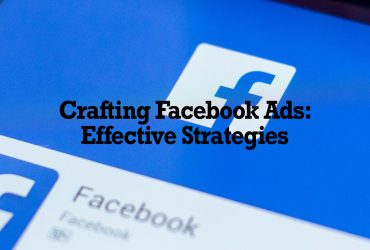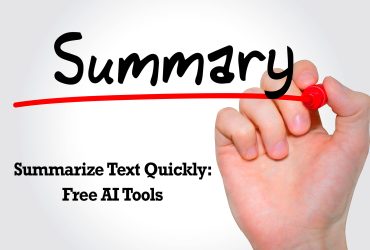Personal branding has become a critical aspect of career development and business strategy. A strong personal brand sets you apart in a crowded digital space, opening doors to opportunities and establishing your reputation. Personal branding statements serve as your professional tagline, encapsulating who you are, what you offer, and your unique value. These concise statements can have a profound impact on your career trajectory, making it essential to craft them with care.
Understanding the Power of Personal Branding Statements
Personal branding statements are brief declarations that communicate your professional identity and core values. They’re the essence of your brand, distilled into a single, memorable sentence. A well-crafted statement can influence how you’re perceived and remembered by potential employers, clients, and your professional network. Take, for example, a successful entrepreneur whose personal branding statement highlights innovation, strategic thinking, and a commitment to sustainability. This not only reflects their business ethos but also attracts like-minded clients and partners.
Our personal branding statement generator is designed to simplify the process of creating a powerful brand statement. It guides users through a series of prompts, ensuring that the final product is both authentic and impactful. Whether you’re a content creator, digital marketer, or influencer, our generator can help you articulate your value in a way that resonates with your audience. Unlike other tools, our generator focuses on the nuances of individual industries, offering tailored suggestions that elevate your personal brand.
To create a statement that truly represents you, start by identifying your unique selling proposition (USP). What makes you stand out in your field? Next, define your target audience and understand their needs. Your statement should address how you can meet those needs uniquely. Craft a value proposition that’s compelling and speaks directly to your audience. Remember to weave in relevant keywords to boost your SEO, making your brand more discoverable online.
Best Practices for Personal Branding Statement Optimization
Your personal branding statement should be persuasive and memorable. Use storytelling techniques to connect with your audience on an emotional level. It’s important to strike a balance between professionalism and authenticity—your statement should be true to who you are while also appealing to your industry. Including industry-specific jargon can be effective, as long as it resonates with your audience and enhances your message.
Different platforms require different approaches to personal branding. Your statement on social media might be more casual and approachable, while your LinkedIn profile may benefit from a more formal tone. On your personal website or blog, you have the freedom to expand on your statement, weaving in more of your story and professional journey. Tailoring your statement to each platform ensures it’s optimized for the audience you’re addressing, making a lasting impression.
Leveraging the Power of Personal Branding Statements in Job Applications
A powerful personal branding statement can significantly enhance your resume. It’s more than just a catchy tagline; it’s a concise and compelling summary of your professional skills, experiences, and values. It articulates your unique selling proposition, making you stand out from other candidates. By using a personal branding statement generator, you can craft a statement that perfectly encapsulates who you are as a professional.
Your personal branding statement can also make an impactful first impression on your cover letter. It sets the tone for the rest of your letter, immediately capturing the attention of the hiring manager. It also provides a snapshot of your professional identity, giving employers a glimpse of what you bring to the table. A well-crafted statement can pique their interest and encourage them to read more about your qualifications.
During job interviews, a compelling personal branding statement can help you stand out from the competition. It provides a clear and concise answer to the common interview question, “Tell me about yourself.” By conveying your unique value proposition, it can leave a lasting impression on the interviewer, increasing your chances of landing the job.
Amplifying Your Personal Brand through Content Marketing
Creating engaging blog posts centered around your personal branding statement can amplify your personal brand. It can help establish your expertise in your field, attract your target audience, and build trust with your readers. By consistently producing high-quality content that aligns with your statement, you can cultivate a strong online presence and reinforce your personal brand.
Incorporating your personal branding statement into your email marketing campaigns can also strengthen your brand. It can serve as a powerful hook that grabs the attention of your subscribers, encouraging them to open your emails and engage with your content. It can also reinforce your brand message, reminding your audience of the value you offer.
Guest posting opportunities can also be leveraged to amplify your personal brand. By incorporating your personal branding statement into your guest posts, you can reach a wider audience and boost your credibility. It can also drive traffic back to your website or blog, increasing your visibility and expanding your professional network.
Building Trust and Credibility with Your Personal Branding Statement
Your personal branding statement can help establish you as an industry expert. By clearly articulating your unique skills, knowledge, and experiences, it can demonstrate your expertise in your field. This can enhance your credibility, making you a trusted resource for your target audience.
Incorporating testimonials and social proof into your personal branding statement can also boost your credibility. By showcasing the positive experiences and results of your previous clients or customers, it can provide tangible evidence of the value you deliver. This can build trust with your audience, increasing their confidence in your abilities.
Consistently delivering on the promises made in your personal branding statement is crucial for building trust and credibility. It’s not enough to talk the talk; you must also walk the walk. By consistently demonstrating your skills and delivering value, you can prove that your personal brand is more than just a catchy slogan; it’s a promise of quality and reliability.
Tracking and Measuring the Success of Your Personal Branding Statement
Utilizing analytics tools can help you monitor the engagement and conversion rates of your personal branding statement. By tracking key metrics such as click-through rates, time spent on your website, and conversion rates, you can gauge the effectiveness of your statement. This can provide valuable insights that can guide your optimization efforts.
Making data-driven optimizations can enhance the effectiveness of your personal branding statement. By analyzing your performance data, you can identify areas of improvement and make necessary adjustments. Whether it’s tweaking your wording, adjusting your tone, or refining your message, data-driven optimizations can help you craft a more compelling and effective personal branding statement.
Overcoming Challenges in Personal Branding Statement Development
Imposter syndrome and self-doubt can be significant obstacles in the development of your personal branding statement. It’s common to question your abilities and fear that you’re not good enough. However, it’s important to remember that your personal brand is a true reflection of your skills, experiences, and values. By using a personal branding statement generator, you can craft a statement that accurately represents your professional identity.
Negative feedback or criticism of your statement can be challenging to deal with. However, it’s important to view it as an opportunity for growth. By taking constructive criticism on board, you can refine your statement, making it more compelling and effective.
As your brand grows, your personal branding statement may need to evolve and adapt. It should reflect your current skills, experiences, and goals. By regularly reviewing and updating your statement, you can ensure that it remains relevant and accurately represents your professional identity.
Testing and Optimizing Headlines
Creating great Facebook ad headlines involves a lot of trial and error. A/B testing is a valuable tool that allows you to compare two different headlines and see which one performs better. This method involves creating two versions of the same ad, each with a different headline, and running them simultaneously to see which one garners more clicks.
Testing different headlines is crucial for optimizing your Facebook ads. A headline that resonates with your audience can significantly increase your click-through rate. It’s not about guessing what will work; it’s about gathering data and making informed decisions. The more you test, the more you learn about your audience and what appeals to them.
To conduct effective A/B testing, start by identifying the goal of your ad. Then, create two different headlines that convey the same message. Run both ads simultaneously, with the same budget and targeting. After a set period, analyze the results and use the data to inform your future headline choices.
Analyzing Headline Performance
When analyzing the performance of your Facebook ad headlines, there are several key metrics to consider. Click-through rate (CTR) is a primary indicator of headline success. Other important metrics include conversion rate, cost per click, and return on ad spend. These metrics can provide insights into how well your headline is driving users to take the desired action.
Data analysis is key to refining and improving your Facebook ad headlines. By comparing the performance of different headlines, you can identify trends and gain insights into what works and what doesn’t. Based on these insights, you can tweak your headlines to make them more compelling and effective.
Overcoming Common Headline Challenges
If your Facebook ad headlines are underperforming, it’s time to troubleshoot. Start by reviewing your headline’s relevance to your target audience. Is it clear and compelling? Does it convey the value of your offer? If not, it may be time to revisit your headline strategy.
If your headlines are not delivering the desired results, consider adding a sense of urgency or a call to action. Experiment with different tones and styles. Remember, the goal is to catch the user’s attention and entice them to click on your ad.
Avoiding Clichés and Overused Phrases
Tired, clichéd headlines can make your ads blend into the background. To stand out, avoid overused phrases and aim for originality. Try to convey your unique selling proposition in a fresh and engaging way.
To encourage originality in your Facebook ad headlines, stay updated with current trends and cultural references. Use humor, ask questions, or create a sense of intrigue. Remember, a great headline is not just about selling; it’s about connecting with your audience.
The Future of Facebook Ad Headlines
As digital advertising evolves, so do headline strategies. For instance, personalization is becoming increasingly important. Ads that speak directly to the user can significantly increase engagement. Similarly, headlines that evoke emotion or tell a story can be highly effective.
Predictions for the Evolution of Ad Headlines on Facebook
Looking ahead, we can expect the use of data in headline creation to increase. With advancements in AI and machine learning, advertisers will be able to create more targeted and personalized headlines. Additionally, as users become more savvy, the demand for authenticity and transparency in advertising will grow.
Final Thoughts
To recap, writing great Facebook ad headlines involves understanding your audience, testing different headlines, analyzing performance data, and staying original. It’s about striking a balance between creativity and data-driven decision making.
The world of Facebook advertising is dynamic and ever-changing. To stay ahead, continuous experimentation and learning are essential





